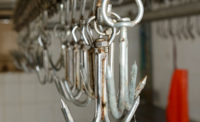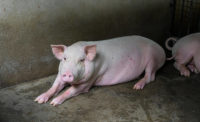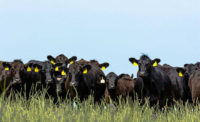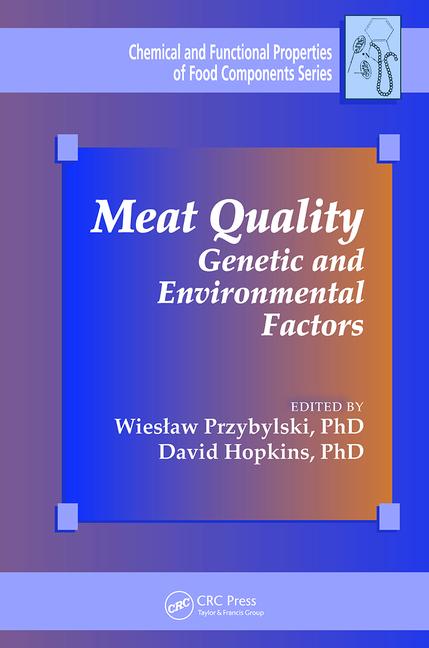Tech | Processing
Committing to improved slaughter standards
Companies — and consumers — are paying more attention to humane slaughter methods.

Whole Foods Market recently announced it will phase out live-shackle slaughter from its chicken suppliers at all U.S. locations by 2026, becoming the first major retailer to follow the Better Chicken Commitment. These ethics standards already have support from Blue Apron, Chipotle, Burger King and small and local grocers. The reason? Consumers want them.
“You now have larger companies paying even more attention to how they slaughter, and are investing in large-scale, humane slaughter methods — whether it’s CO2 stunning or other methods,” says Chris Fuller, U.S. Department of Agriculture (USDA) meat consultant and processing plant advisor at Fuller Consulting, in San Diego County, Calif. “They want the highest quality process, best technology and things done right.”
The Better Chicken Commitment supports a multistep, controlled atmosphere processing system for poultry by 2024, instead of the conventional method of live-dumping and live-shackling, broiler cages and pre-stun handling. Currently, most poultry slaughterhouses follow these steps before slitting birds’ throats with a machine and defeathering them in scalding-hot water tanks.
As a comparison, controlled-atmosphere stunning (CAS) with carbon dioxide (CO2) works by slowly removing the oxygen in birds’ crates and replacing it with a nonpoisonous gas so they will fall asleep and die. Workers can then process the birds without any struggle. The method isn’t widely used in North American poultry houses, despite being endorsed by meat industry and USDA advisors such as Drs. Temple Grandin, Ian Duncan and Mohan Raj.

“When poultry companies switch stunning systems, they are choosing CO2 stunning,” says Dianna Bourassa, Ph.D., assistant professor/extension specialist in poultry processing at Auburn University, in Auburn, Ala. “But it’s a slow, very expensive, high-capital change to make.”
Another controlled-atmosphere stunning method is available though — low-atmospheric-pressure stunning (LAPS), Bourassa says. “It’s like CO2 stunning in that it controls the birds’ atmosphere to decrease the amount of oxygen available to them,” she says. “But it’s not as commonly used as CO2 stunning, perhaps because of its newness.” The gradual removal of oxygen by vacuum pump causes the birds to lose consciousness and die due to hypoxia (lack of oxygen).
LAPS first appeared in 2017-18 for European customers and has since been approved in the U.S. “It had to pass a rigorous process in the European Union for approval,” says Bourassa. “There’s no reason to think it won’t be as good as CO2 stunning. For now, only one U.S. plant is using LAPS.”
The benefit to LAPS is that no gasses are involved, Bourassa says. “There’s no need to make long-term purchases of CO2,” she says.
The negative? Cost. “It’s always expensive to install a new system, and there are always maintenance costs for such a large piece of equipment,” she says. “Plus, it still so new that it’s not a tried-and-tested method yet. But adding LAPS as another option is a good thing.”
MODIFYING CURRENT SYSTEMS
Most slaughter/stunning changes over the past year have been minor improvements, not game changers, Bourassa says. Changes include alternating current in electrical stunning to prevent birds from waking up after stunning and the use of breast bars. For example, before stunning, bars can be added to the processing area to maintain contact with the bird’s front to support or calm the bird.

“There’s always small developments in equipment to make it more reliable,” Fuller says. “Every year, we also see improvements with sanitizing equipment.”
The factors to consider are, does the equipment do the job it’s meant to do and with less maintenance, operation skill and worker training? “Whether it’s through software or equipment design, we need equipment with more reliability and with less skill needed for operators,” Fuller says.
The Coronavirus (COVID-19) has demanded improvements for worker safety and ergonomics, Fuller says. “Because we’re seeing less people working on processing lines, we’ve had slower line speeds, which relate to a better environment for employees,” he says. “So, whether it’s a new technology or not, some changes make for a better environment for workers. In my plant, we use dividers and try to make sure everything is as clean as possible so there are less issues with workers having to do more washdowns.”
Presuming we will get through the pandemic in the next six to eight months, more businesses will try to increase throughput sometime next year. “They will look at current systems and say, how do we increase throughput and keep the same labor rates?” says Fuller. “More investment in technology that will make the slaughter process easier for operators is critical, so less time is needed to maintain equipment. So, I wouldn’t be surprised to see more companies invest in slaughter technology and equipment next year, because they held off this year.” NP
Looking for a reprint of this article?
From high-res PDFs to custom plaques, order your copy today!










